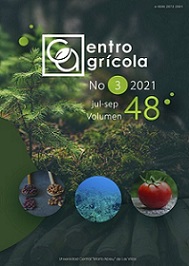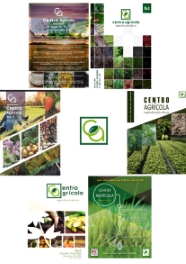CE: 2414 CF: cag102162079
SCIENTIFIC ARTICLE
Polyphagotarsonemus latus (Banks) as pest in agricultural crop of economic interest of the municipalities Abreu and Aguada de Pasajeros
Polyphagotarsonemus latus (Banks) como plaga en cultivos agrícolas de interés económico de los municipios Abreu y Aguada de Pasajeros
Leydi Díaz García1; Neivys Yanes López2; Leónides Castellanos González3, Niarfi Morejón López2
1 Empresa Agropecuaria Horquita, Comunidad Horquita, municipio Abreus, Cienfuegos, Cuba. CP 59380.
2 Estación de Protección de Plantas Yaguaramas. Calle Abreu no 54, Yaguaramas, Abreu, Cienfuegos, Cuba. CP 59400.
3 Centro de Estudios para la Transformación Agraria Sostenible (CETAS). Facultad de Ciencias Agrarias, Universidad de Cienfuegos, Cuatro Caminos, Carretera a Rodas Km 4, Cienfuegos, Cuba. CP 55100.
E-mail: This email address is being protected from spambots. You need JavaScript enabled to view it.
ABSTRACT
The investigation was developed during six winter and spring seasons in the municipalities of Abreus and Aguada de Pasajeros with the aims to know the preference of Polyphagotarsonemus latus (Banks) and levels of incidence for crops. The data filed were obtained in the Protection Station of Yaguaramas about four the crops in the register of existent areas, stationary fields, journeys of itinerary, reports of seasons and historical territorial registration. It was analyzed the levels of incidence by varieties, sowing times or plantation according to meteorological variables. It was picked up affected crops and frequency of incidence of the mite, percentage of area with presence and level of incidence per crops and season. It is reported the white mite as important pest, with high percent of affected areas in cold and spring season for potato, common bean, cowpea, pepper at fields and greenhouse. This surpassed the Control Economic Threshold in all cultivations sowed or planted; not being this way in common bean that only it happened in two seasons. In February-March, April-May the higher incidences occurred in the fields, without a marked preference for pepper greenhouse. The highest incidences happened to minimum temperature of 18 0C and 94 % of relative humidity. It don not put on in evidence the preference of the mite for some variety of the crops in study; throwing differences among early, intermediate and late season for pepper greenhouse in spring and for common bean and cowpea.




